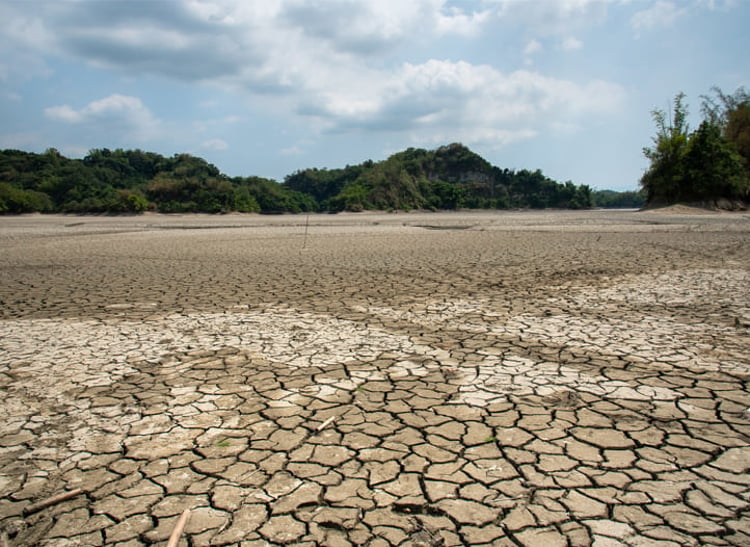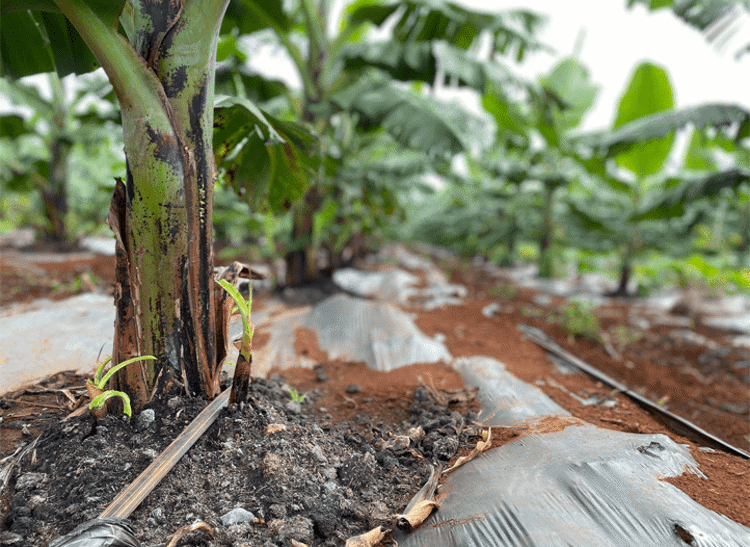Building Resilience: Overcoming El Niño Uncertainty
In the past couple of months, our site in Bangkok has experienced a notable influx of visitors and a substantial increase in inquiries regarding precision irrigation solutions. Changing weather patterns are on everyone’s agenda as reports released by the World Meteorological Organization in March 2023, assert that the rare, three year in a row La Niña is officially over, and another cycle of El Niño is heading our way.
La Niña and El Niño are natural phenomena in the tropical Pacific Ocean; La Niña is marked by cooler-than-average ocean temperatures, while El Niño brings higher temperatures. El Niño events are typically associated with increased rainfall in parts of southern South America, the southern United States, the Horn of Africa and Central Asia. In contrast, El Niño can also cause severe droughts over Australia, Indonesia, and parts of Southern Asia.
Who’s afraid of El Nino?
The current cycle of El Nino is already showing its first signs. South Africa and India face the risk of drought and extreme heat, as do countries in the West Pacific region, including Indonesia, Australia, and Pacific Island nations like Vanuatu and Fiji. In Australia, which is still recovering from extensive flooding, El Niño is expected to bring drier and hotter weather, particularly in the eastern regions of the country. India is also preparing for the impacts of El Niño, which has the potential to weaken the monsoon rains that are crucial for replenishing aquifers and supporting crop growth. Moreover, El Niño could further elevate temperatures in India, which is already experiencing unusually early heatwaves, and delay the onset of the monsoon. Prolonged dry spells would exert significant pressure on water security in these regions.

In Thailand, farmers are already experiencing the repercussions of an impending El Niño episode. In anticipation of prolonged periods of reduced rainfall, the Thai government, the world's second-largest exporter of rice, is urging farmers to limit their cultivation to just one crop this year instead of the usual two. Rice cultivation requires substantial amounts of water and relies on a combination of irrigation and adequate precipitation. These early measures highlight the potential impact of the disruptive weather pattern on global food production.
In light of all this, one may wonder, what kind of farming practices can farmers adopt to mitigate El Niño’s challenges and ensure their operations remain stable?
Can we trust the rain?
The elusive nature of La Nina/El Nino cycles is a painful reminder that we can’t.
Rainfed agriculture covers 80% of the world's cultivated land and is responsible for about 60% of crop production. As long as the rain comes on time and in generous amounts, farmers can enjoy relative predictability. Unfortunately, that’s not the case any more. Across the planet, severe droughts, prolonged heat waves, and erratic rainfall are now the norm.
Strengthening water security through robust infrastructure
The development of water storage facilities and distribution systems is of paramount importance for mitigating the impact of water scarcity and ensuring the continued availability of this precious resource. Adequate storage facilities, such as reservoirs and dams, enable the collection and retention of water during periods of abundance (such as La Nina), and safeguarding against the challenges posed by extended dry spells. Additionally, well-designed distribution systems allow for the efficient transport and allocation of water resources to areas that are most in need. By investing in the development and enhancement of these vital infrastructure systems, communities can better prepare for and manage the effects of El Niño and safeguard their access to water, thus ensuring the sustenance of human life, agriculture, and economic activities.
Unfortunately, when entire regions experience severe and prolonged droughts, water storage facilities and robust infrastructure are simply not enough and must be combined with responsible and precise water usage. In Vietnam for instance, the current water level of irrigation reservoirs is around 23% lower than at the same time during previous years, and many reservoirs and rivers are experiencing dead water levels. The prolonged drought has caused a severe water shortage in Vietnam, affecting many hectares of crops, and creating serious economic difficulties for the locals who live off the water.
Sustainable success powered by precision irrigation
In Mindanao, Philippines, thirty years ago, only 20% of the 90,000 hectares of intensively cultivated bananas were irrigated. Growers initially saw irrigation as an insurance policy against dry spells but as those dry spells became longer and more frequent, and buyers demanded specific quality and consistency, farmers began to realize they needed to bring stability and sustainability into their farming operation. In 2016-2017, in the aftermath of the previous El Niño event, a leading plantations company, cultivating 8000 ha of bananas in the Philippines, took proactive measures to mitigate the potential impact of future droughts. The impact of the 2016 El Nino on the banana industry was a yield and quality reduction of around 25%. This pushed the grower to take an active step and implement drip irrigation. The outcome was remarkable, with a 33% reduction in water usage and a 50% increase in yields achieved.

Today, a massive 50,000 hectares of banana plantations in the Philippines enjoy the benefits of precision irrigation which delivers water directly to the plant’s root zone in precise amounts, thus minimizing wastage and optimizing water usage. These systems enable farmers to adapt to the limited water availability during El Niño, ensuring the survival and growth of crops.
Mitigating uncertainties, driving resiliency
In addition to prolonged droughts and dry spells, El Niño has a far-reaching impact on various aspects of water resources. It not only diminishes river flows but also degrades water quality, reduces the available volume of water in wells, and increases salinity in groundwater. However, the most challenging aspect of El Niño is the uncertainty surrounding it; what triggers it, how long it will last, and how severe it will be.
But, we do not have to resign ourselves to living with this uncertainty. By embracing efficient water utilization practices, such as precision irrigation, farmers can proactively address the challenges posed by El Niño, eliminate uncertainties, gain greater control over their operations, safeguard food production and foster sustainable water management practices.
We see it as our mission to help farmers by giving them the tools to mitigate uncertainties and ensure a resilient future in the face of changing climatic conditions. You’re welcome to stop by our office for advice and a steaming (or iced) cup of Jasmine tea.
